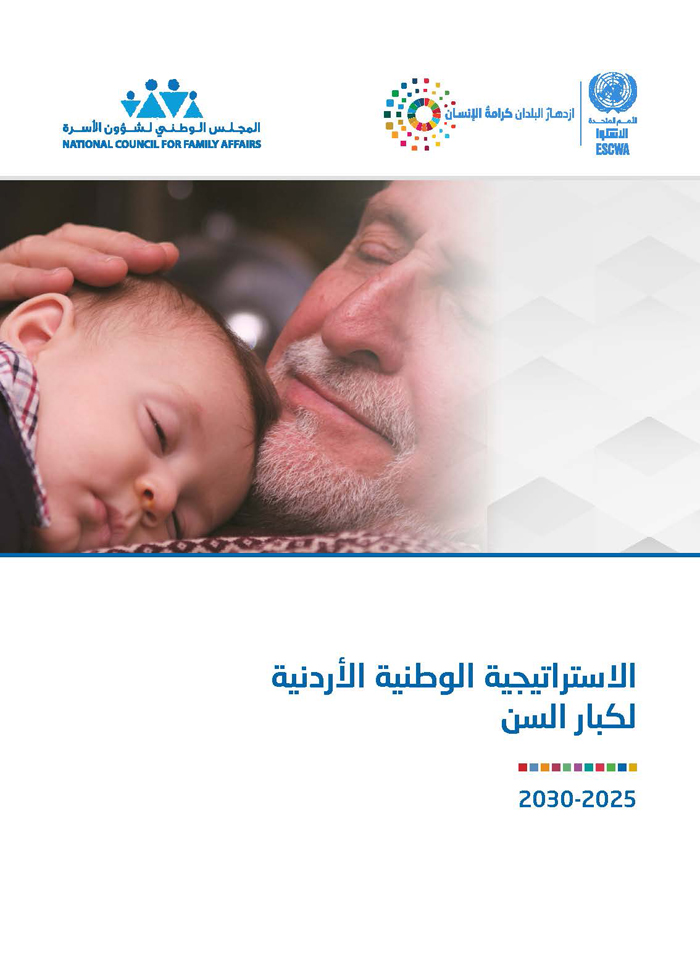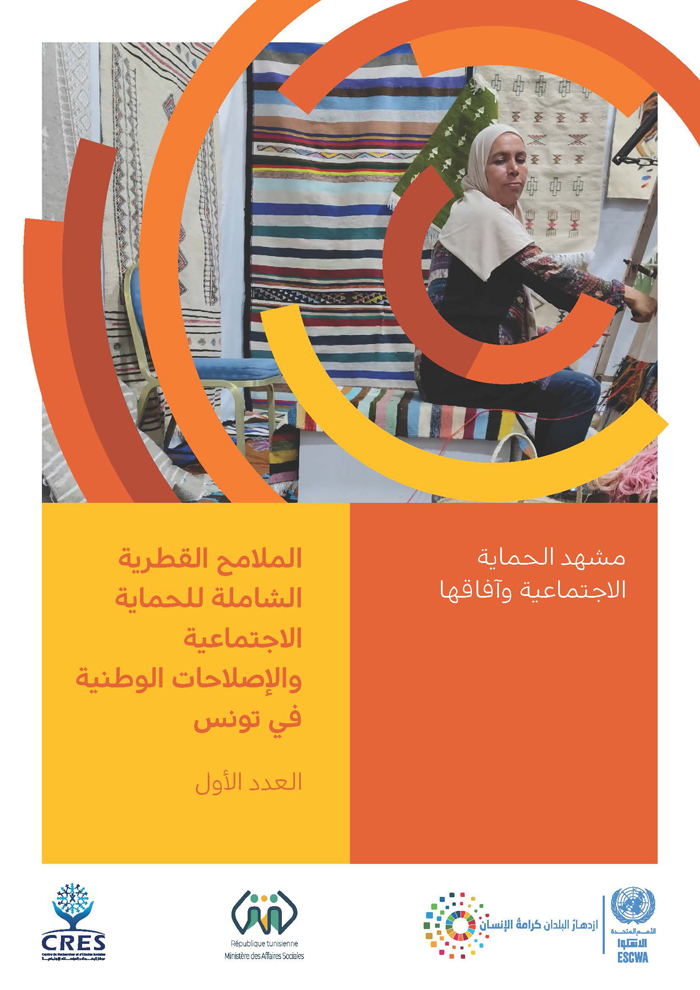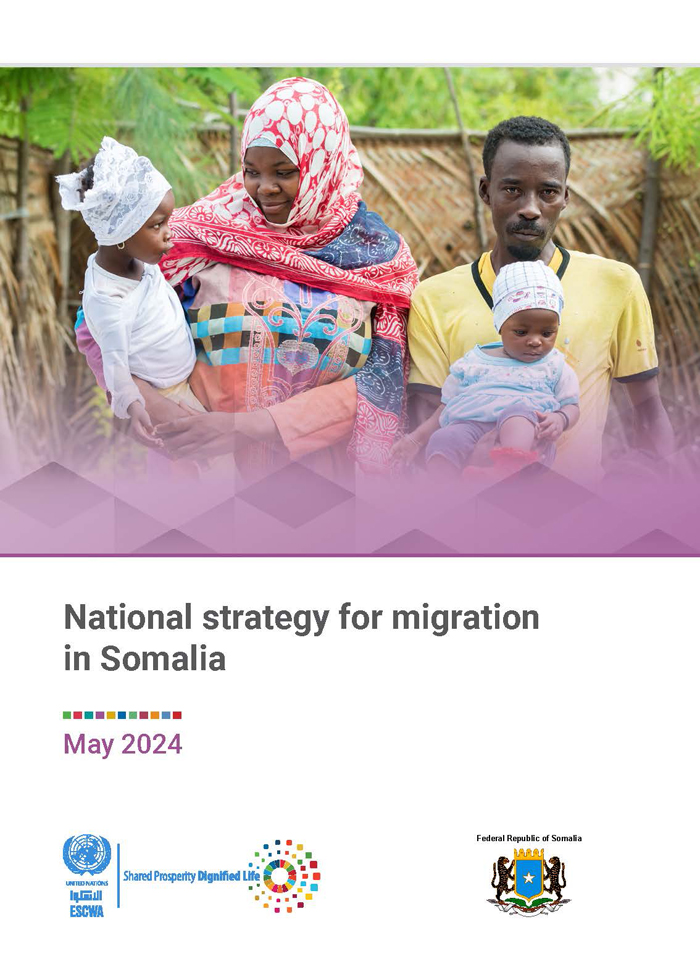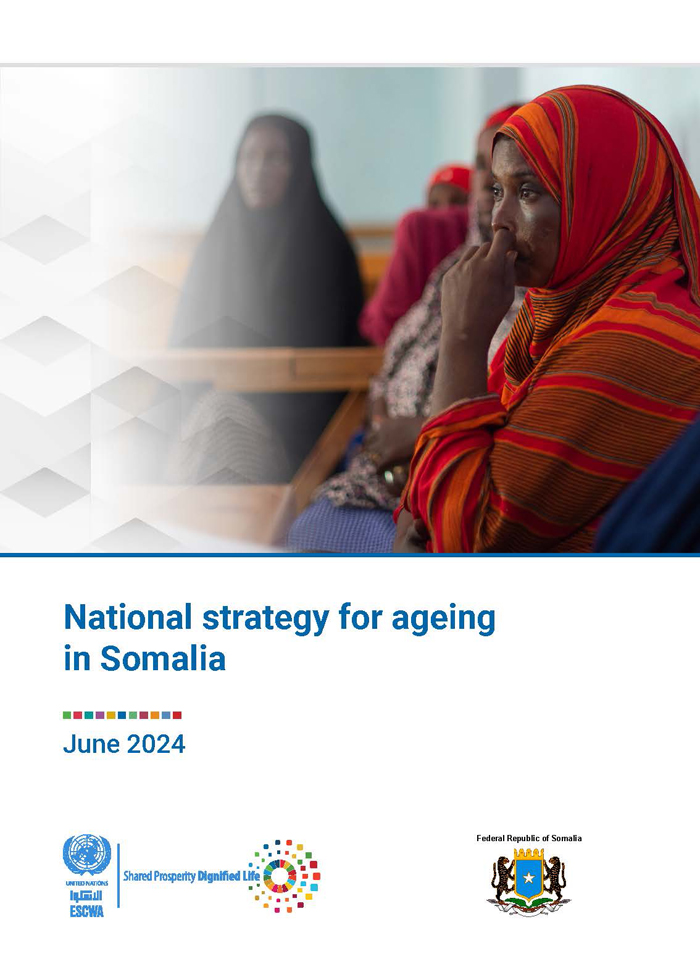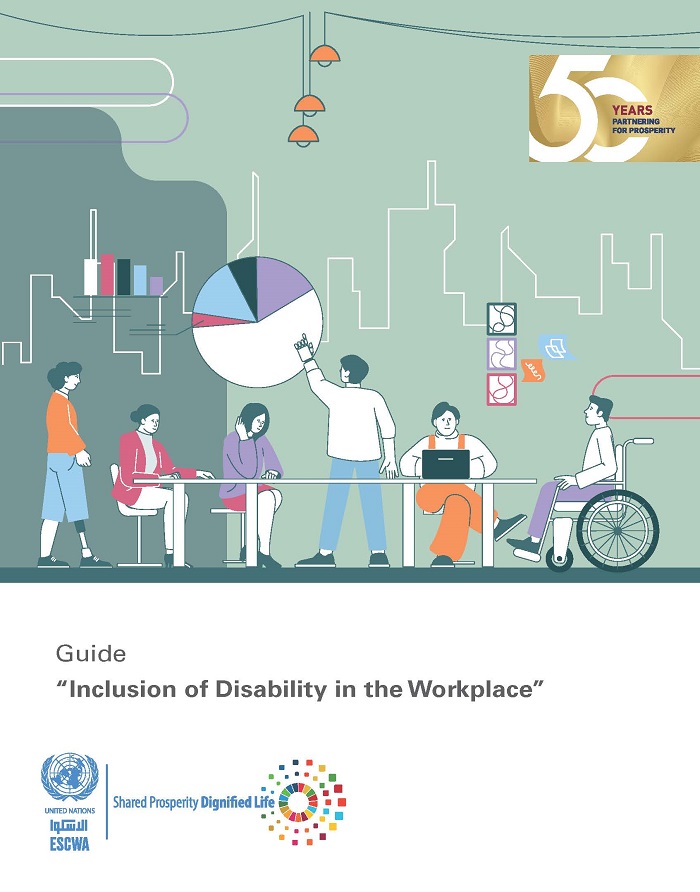
ESCWA Publication: E/ESCWA/CL2.GPID/2023/MANUAL.1
Country: Arab region
Publication Type: Training material
Cluster: Gender Justice, Population and Inclusive Development
Focus Area: Gender equality, Inclusive development, Population dynamics & migration
Initiatives: Including persons with disabilities in the labour market, Realizing the rights of persons with disabilities
SDGs: Goal 3: Good Health and Well-Being, Goal 4: Quality Education, Goal 5: Gender Equality, Goal 8: Decent Work and Economic Growth
Keywords: Persons with disabilities, Labour market, Working conditions, Assimilation, Staffing, Personnel management, Private sector, Right to work, Discrimination, Segregation, Human rights, Interpersonal communication, Performance appraisal, Equipment and supplies, Laws and regulations, Training programmes, Manuals
Guide to inclusion of disability in the workplace
January 2024
Inclusive work environments represent a major challenge to empowering persons with disabilities and promoting comprehensive employment. This is due to various difficulties and the interactions these environments impose between actors in the environmental and social systems, which impedes progress towards achieving comprehensive work environments for persons with disabilities. Negative attitudes, misconceptions, discrimination and the absence of inclusive employment and diversity management strategies and programmes also result in low employment rates for persons with disabilities.
The guide to inclusion of disability in the workplace is a training tool for employers. It consists of several modules on better integration of persons with disabilities into labour markets in Arab countries by improving employment attitudes, policies and practices. This guide aims to highlight to public and private sector companies, the discrimination that persons with disabilities face in obtaining employment and the barriers that hinder their access to employment opportunities on an equal basis with others.
The guide consists of eight training modules divided into two parts and covering various topics, including issues of comprehensive inclusion, language and communication, integration management and the importance of developing comprehensive strategies and plans in this context. Each part can be used as an independent training material, based on the need and priority. The two parts can also be used together to achieve greater benefit and a deeper and more comprehensive understanding of the basic issues that will enhance the comprehensive inclusion of persons with disabilities in the labour market in the Arab region.
Related content
Gender equality
, Inclusive development
, Population dynamics & migration
,
Inclusive work environments represent a major challenge to empowering persons with disabilities and promoting comprehensive employment. This is due to various difficulties and the interactions these environments impose between actors in the environmental and social systems, which impedes progress towards achieving comprehensive work environments for persons with disabilities. Negative attitudes, misconceptions, discrimination and the absence of inclusive employment and diversity management strategies and programmes also result in low employment rates for persons with disabilities.
The guide to inclusion of disability in the workplace is a training tool for employers. It consists of several modules on better integration of persons with disabilities into labour markets in Arab countries by improving employment attitudes, policies and practices. This guide aims to highlight to public and private sector companies, the discrimination that persons with disabilities face in obtaining employment and the barriers that hinder their access to employment opportunities on an equal basis with others.
The guide consists of eight training modules divided into two parts and covering various topics, including issues of comprehensive inclusion, language and communication, integration management and the importance of developing comprehensive strategies and plans in this context. Each part can be used as an independent training material, based on the need and priority. The two parts can also be used together to achieve greater benefit and a deeper and more comprehensive understanding of the basic issues that will enhance the comprehensive inclusion of persons with disabilities in the labour market in the Arab region.
